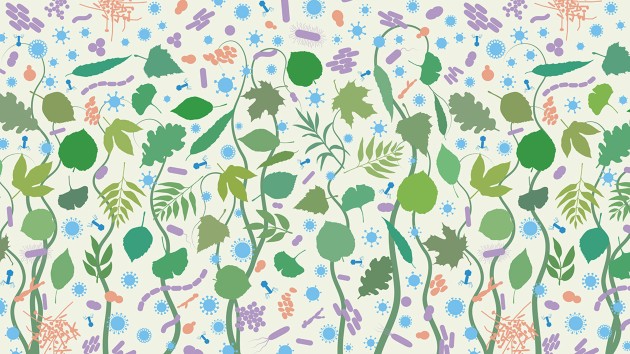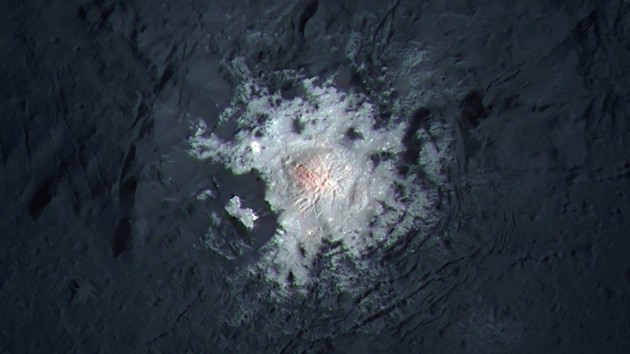Collection |
Collections
-
-
Collection |
 Subduction
Subduction
Subduction is the primary driver of plate tectonics and has provided a critical exchange of life-supporting elements between the biosphere and geosphere over Earth’s history.
Image: Natural History Museum, London/Alamy -
Collection |
 Celebrating 15 Years of Covalent Organic Frameworks
Celebrating 15 Years of Covalent Organic Frameworks
This collection celebrates 15 years of research on covalent organic frameworks and highlights some of the contributions that were published in journals of the Nature Research portfolio. We hope you enjoy exploring these snippets on the synthesis and structure of COFs, their physical properties, and their application in fields encompassing energy, catalysis, storage and separation.
Image: 10.1038/s42004-020-0278-1 -
Collection |
 Harnessing the power of computational science
Harnessing the power of computational science
The use and development of sophisticated computing capabilities to analyse and solve real-world, challenging problems has undoubtedly revolutionized the way researchers do science.
-
Collection |
 The plant microbiome
The plant microbiome
The UN General Assembly proclaimed that 2020 is the International Year of Plant Health to recognize and protect plant health, and to raise awareness of the crucial role of plant health in ecosystem health, food security and human health. Plants host diverse microbial communities that are associated with plant roots, the phyllosphere, rhizosphere and the endosphere, and comprise bacteria, fungi, protists, nematodes and viruses. Numerous studies from different fields of research have expanded our knowledge of the complex interactions between the plant, the associated microbial communities as well as the environment, and provided insights into the ecology and functions of this co-association, including the appreciation that the plant microbiota is important for plant growth, fitness, stress resilience and health. Such an increased understanding opens up the possibility to harness plant-associated communities for sustainable plant production and agricultural practises and to protect plants from the effects of climate change and human activities that lead to a decrease in biodiversity and the spread of plant diseases. This Collection contains Reviews and Research articles from across the Nature group of journals that cover the latest advances in plant microbiome research, addressing critical knowledge gaps that need to be addressed, such as a better understanding of the assembly of the plant-associated microbial communities, their dynamics, metabolic interactions or functional properties.
Image: Philip Patenall/Springer Nature Limited -
Collection |
 Nobel Prize in Chemistry 2020
Nobel Prize in Chemistry 2020
The 2020 Nobel Prize in Chemistry has been awarded to Emmanuelle Charpentier and Jennifer Doudna for their pioneering work in gene-editing.
Image: Springer Nature/The Nobel Foundation/Imagesource -
Collection |
 Nobel Prize in Physics 2020
Nobel Prize in Physics 2020
We present this Collection of research, review and comment from Nature Research to celebrate the award of the 2020 Nobel Prize in Physics to Roger Penrose “for the discovery that black hole formation is a robust prediction of the general theory of relativity” and to Reinhard Genzel and Andrea Ghez “for the discovery of a supermassive compact object at the centre of our Galaxy”.
Image: Springer Nature/The Nobel Foundation/Imagesource -
Collection |
 Nobel Prize in Physiology or Medicine 2020
Nobel Prize in Physiology or Medicine 2020
This collection of research, review and comment from Nature Research celebrates the 2020 Nobel Prize in Physiology or Medicine awarded to Harvey J. Alter, Michael Houghton and Charles M. Rice "for the discovery of hepatitis C virus".
Image: Springer Nature/The Nobel Foundation/Imagesource -
Collection |
 Digital and computational epidemiology for pandemic management
Digital and computational epidemiology for pandemic management
Computational models and digitally acquired data are increasingly becoming integrated into the decision making process with respect to pandemic control. Nation-wide lockdowns have been issued or released based on results from model simulation outputs. In this collection, we highlight research published in Nature Communications contributing to the development of a more prepared and transparent disease surveillance system, using the wealth of digital data on human behaviour and health, without compromising privacy rights.
Image: Getty -
Collection |
 Stromal–immune cell interactions
Stromal–immune cell interactions
Immune cells journey throughout the body surveilling for signs of danger or damage.
-
Collection |
 Coasts
Coasts
The boundary between land and sea, coasts are unique systems with critical importance. This collection and editorial showcase research in coastal science under themes of biogeochemistry, ecology and natural hazards.
-
Collection |
 Dawn XM2 at Occator crater
Dawn XM2 at Occator crater
Close to the end of its mission, the Dawn spacecraft performed high resolution observations of Occator crater at Ceres in order to study its bright points (faculae) at unprecedented detail. These observations establish Ceres as an ocean world.
Image: NASA/JPL-Caltech/UCLA/MPS/DLR/IDA/PSI/LPI

 Nature Communications 10th Anniversary Collection
Nature Communications 10th Anniversary Collection